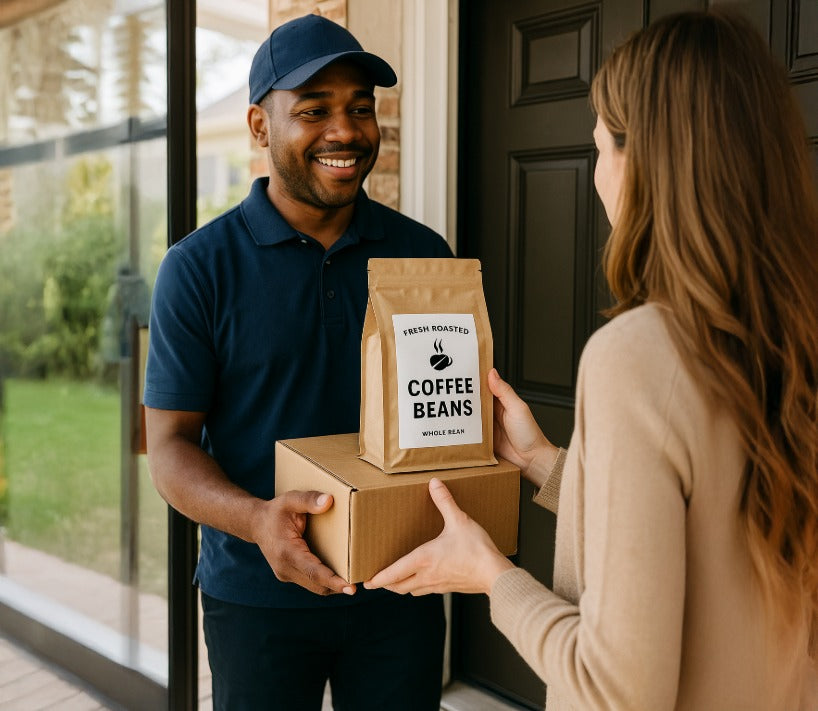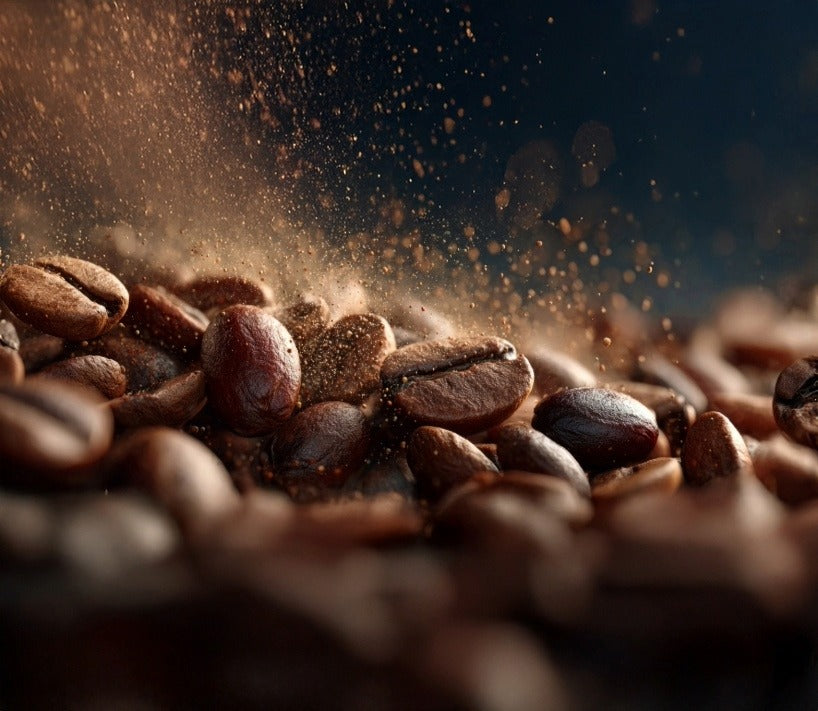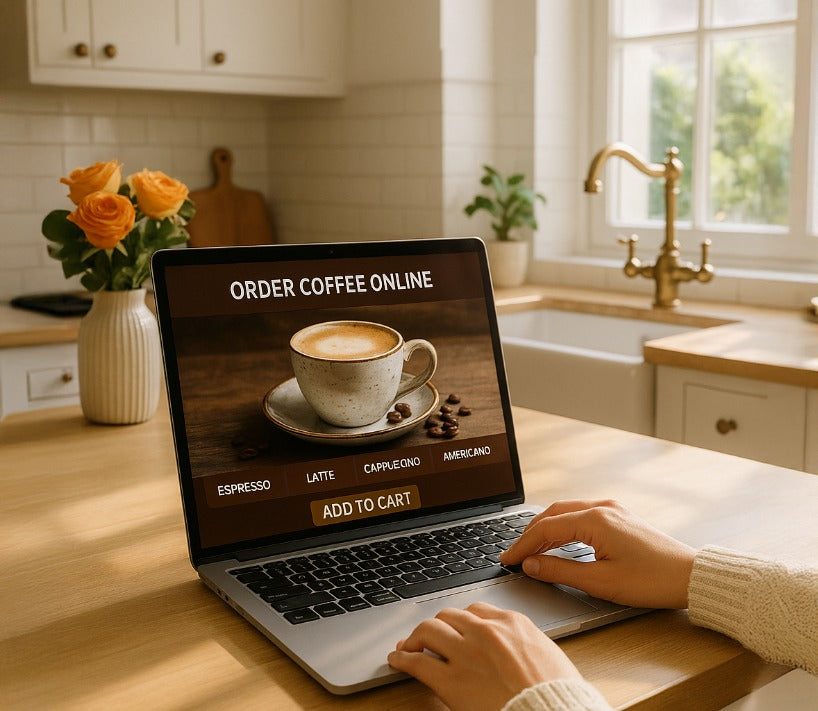Roast Dates & Reality Checks: How to Tell If Your Coffee Is Actually Fresh (and Why It Matters)
May 30, 2025 4 min read
Roast Dates & Reality Checks: How to Tell If Your Coffee Is Actually Fresh (and Why It Matters)
“Wait…did my beans just expire overnight?”
I’m willing to bet you’ve had this moment: you shuffle into the kitchen, still half-dreaming about llamas in sweaters, and reach for the bag of best craft coffee at home you scored online last month. You brew it, take a hopeful sip, and—womp-womp—the cup tastes flat, like someone whispered “coffee” over lukewarm water.
Here’s the kicker: nothing was “wrong” with your brewer, grinder, or zodiac sign. Your beans were just past their prime. Coffee, despite its tough-looking exterior, is a perishable diva that lives a surprisingly short, dramatic life. Its flavors peak roughly 14–21 days after roast. Miss that window, and even the best tasting whole bean coffee starts acting like stale breadcrumbs.
So, how do you dodge the disappointment, spot real freshness, and still keep your espresso habit on speaking terms with your budget? Let’s dive in.
The Nerdy (But Fun) Science of Freshness
1. Coffee Is an Agricultural Product—Treat It Like Produce
We treat lettuce like it wilts in minutes, but coffee beans get tossed in pantries for months. Spoiler alert: roasted coffee undergoes chemical changes right away. Volatile aromatics—the stuff that gives your pour-over those blueberry-jam vibes—escape faster than you can Google “best espresso beans.” Oils migrate to the surface, oxidize, and leave you with bitterness instead of brilliance.
2. The Magical Degassing Window
Freshly roasted beans trap CO₂. Too much gas (0–4 days post-roast) can cause uneven extraction and weird fizzy crema. Between day 5 and day 21, that gas mellows, letting water dissolve flavor compounds at the perfect rate. That’s the sweet spot that baristas call the flavor bloom. After week 3, the CO₂ party is basically over, oxygen barges in, and your “top coffee delivered” tastes like cardboard nostalgia.
3. Roast Date vs. “Best By”—Marketing’s Sneaky Switcheroo
Look closely at your next bag. Does it say Roasted on: 5/10/25 or Best by: 2/10/26? A “best by” date can be 12 months after roast. Companies choose it because it sounds reassuringly distant. But flavor doesn’t obey calendar optimism. If a brand won’t print the roast date, it’s usually hiding how long the beans sat in a warehouse before they reached your cart.
4. Storage Reality Check
Even if you order coffee online straight from a roaster, improper storage can fast-track staleness. Light, oxygen, heat, and moisture are the four horsemen of the bean apocalypse. Use an airtight, opaque container in a cool cabinet. Freezers? Controversial, but safe if the bag is vacuum-sealed and you only thaw once.
5. How to Taste Freshness (Without a Lab Coat)
Fresh coffee has:
-
Aromatic Pop – That head-turning smell when you crack the bag.
-
Complex Sweetness – Layered flavors (think stone fruit, toffee, florals) instead of generic roastiness.
-
Bright Acidity – Not sour, but lively—like citrus zest, not lemon juice overdose.
-
Lingering Finish – Flavors sparkle on your tongue long after swallowing.
Stale coffee tastes flat, papery, and weirdly bitter. If your cup needs milk just to be drinkable, your beans are probably past their “glory days” playlist.
6. Why Specialty Suffers the Most
High-scoring beans—often the ones we gush about as the best specialty coffee online—are grown at precise elevations, processed carefully, and roasted to highlight delicate notes. Age blunts those nuances first. Commodity beans roasted dark can mask staleness with smoke; a peach-note Ethiopian cannot. In other words, the better the bean, the more you’ll notice when it’s gone dull.
Your Practical Freshness Playbook
A. Check the Roast Date Every. Single. Time.
If a site claims to sell the “best coffee online” but hides the roast date, raise an eyebrow higher than your latte art heart pattern. Transparency = trust.
B. Buy Small, Buy Often
Instead of 5-pound bargain sacks, snag 10–12 oz bags every couple weeks. Think of it like fresh bread: better to replenish than stockpile.
C. Time Your Deliveries
Some roasters roast-to-order and ship the same day. Others batch roast on set days. Sign up for alerts or notes so your best small batch coffee hits your doorstep within 48 hours of roast, not 48 days.
D. Brew Between Day 5 and Day 21
Let the beans rest a few days, then enjoy before week 3 ends. Espresso fans: you might enjoy shots up to day 28, but adjust grind finer as beans age.
E. Experiment and Log
Keep a simple notebook or phone note. Record roast date, brew date, grind size, flavor notes. You’ll spot the freshness sweet spot for each origin and roast style.
F. When in Doubt, Talk to Your Roaster
Still confused? Shoot them a message: “Hey, I’m chasing that fruity pop you promised—when were these beans roasted?” A good roaster cares more about your brew enjoyment than pushing inventory. If they don’t answer, consider looking elsewhere for your best craft coffee online fix.
G. Share the Knowledge
Gifting beans? Print a cute tag with the roast date and “Brew before: ______.” That way, your coffee beans as a gift actually taste gift-worthy and not like dusty desk drawer air.
Final Sip: Freshness Isn’t Snobbery—It’s Respect for Flavor
I get it—life’s busy. Maybe you only remember your roast date the same way you remember your high-school locker combo (never). But once you taste the difference, you’ll wonder why you ever settled for anything less than peak-week coffee.
So, the next time you scroll for the best coffee to buy online or a surprise gift for coffee lover friend, picture me in your kitchen waving a roasting log and shouting, “Check the date!” Your future self—eyes bright, palate happy, mug steaming—will thank you.
And hey, if the whole roast-date detective thing still feels overwhelming, DM me. Seriously. Whether you’re ready to buy, browsing for best coffee for non coffee drinkers, or just want to nerd out about grind size, let’s have a coffee convo. Your beans (and your taste buds) deserve it.
Also in Best Coffee To Buy Online Education

Best Fresh Roasted Coffee Delivery Online
November 28, 2025 4 min read
I roast the best tasting coffee at home for you! I use 100% electric equipment, so no hydrocarbons here. Best fresh roasted coffee delivery starts with high-scoring specialty coffee online.

Which Roaster Makes Better Coffee: Gas or Electric?
November 27, 2025 4 min read
Why electric drum roasters produce cleaner, sweeter, more consistent coffee—especially the kind you want when buying fresh roasted coffee beans online or trying to make the best tasting craft coffee at home.

Biggest Coffee Buying Mistake at Home
November 26, 2025 4 min read
Learn why the roast date matters and how to buy fresh, high-quality specialty coffee online. No guesswork when you order coffee online with me. I only stock, roast, and process the best tasting craft coffee at home. I am YOUR personal roaster.
